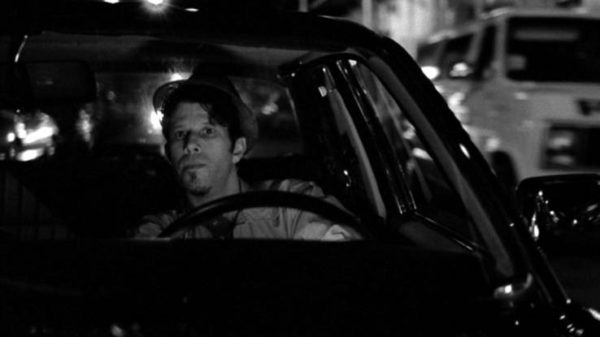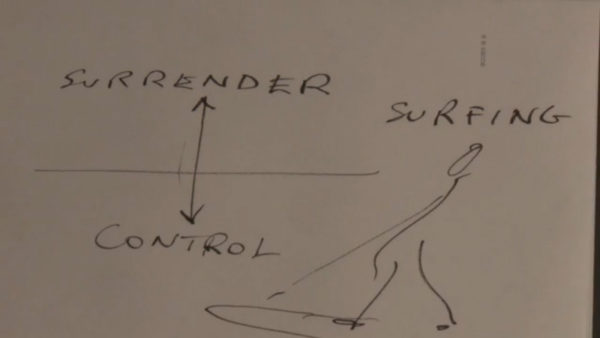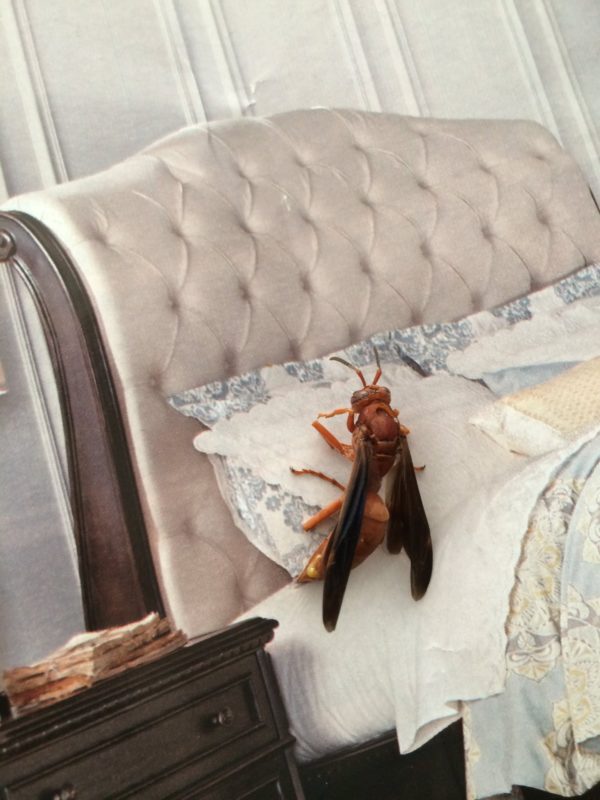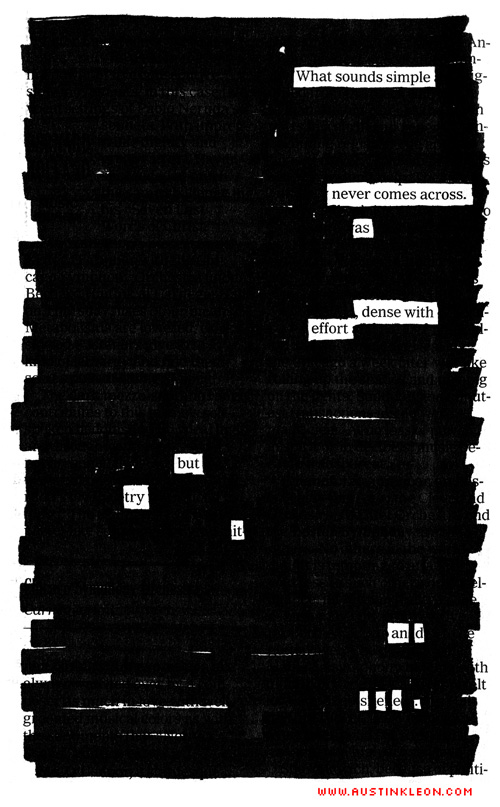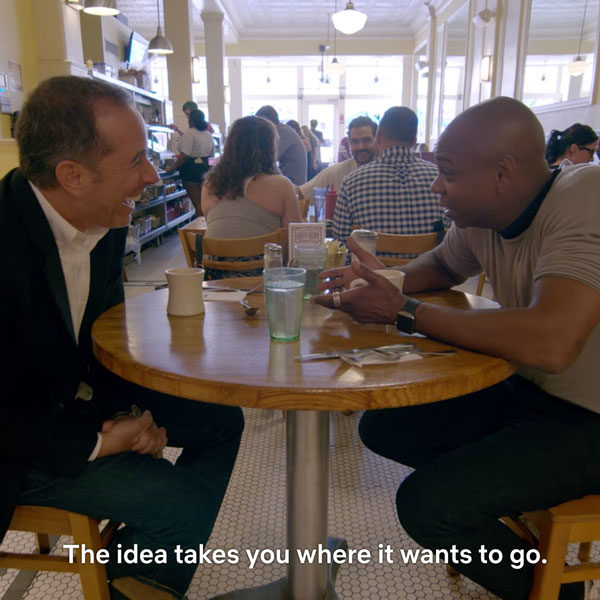
I’m catching up with the latest season of Comedians in Cars Getting Coffee, which I used to enjoy, but now seems like it should be renamed Rich People in Expensive Cars Getting Coffee and Looking Nervous About Not Having Proper Seatbelts.
There was one great spot in the Dave Chappelle episode, though, that I felt was worth transcribing and sharing. Seinfeld asks Chappelle whether he feels like, knowing he can do a great TV show, he shouldn’t try to do another one.
CHAPPELLE: Sometimes the offering drives. If I [have] an idea, it should drive. It’s like the idea says, “Get in the car.” And I’m like, “Where am I going?” And the idea says, “Don’t worry, I’m driving.” And then you just get there.
SEINFELD: The idea’s driving.
CHAPPELLE: Sometime’s I’m shotgun. Sometimes I’m in the f—ing trunk. The idea takes you where it wants to go.
SEINFELD: That’s great.
CHAPPELLE: And then other times, there’s me, and it’s my ego, like, “I should do something!”
SEINFELD: “I should be driving!”
CHAPPELLE: Yeah.
SEINFELD: That’s not good.
CHAPPELLE: No, ‘cause there’s no idea in the car. It’s just me. That formula doesn’t work.
SEINFELD: If the idea is in the car honking, going, “Let’s go…” It pulls up in front of your house.
CHAPPELLE: That’s exactly right.
SEINFELD: “You’re in your pajamas. Get dressed!”
CHAPPELLE: “I’m not ready!” “You can go like this.” “Where are we going? What are we doing?” “Don’t worry about it. You’ll see.”
Although, there’s another great story about cars and ideas, told by Elizabeth Gilbert:
Tom [Waits], for most of his life, he was pretty much the embodiment of the tormented contemporary modern artist, trying to control and manage and dominate these sort of uncontrollable creative impulses that were totally internalized.
But then he got older, he got calmer, and one day he was driving down the freeway in Los Angeles, and this is when it all changed for him. And he’s speeding along, and all of a sudden he hears this little fragment of melody, that comes into his head as inspiration often comes, elusive and tantalizing, and he wants it, it’s gorgeous, and he longs for it, but he has no way to get it. He doesn’t have a piece of paper, or a pencil, or a tape recorder.
So he starts to feel all of that old anxiety start to rise in him like, “I’m going to lose this thing, and I’ll be be haunted by this song forever. I’m not good enough, and I can’t do it.” And instead of panicking, he just stopped. He just stopped that whole mental process and he did something completely novel. He just looked up at the sky, and he said, “Excuse me, can you not see that I’m driving?”
“Do I look like I can write down a song right now? If you really want to exist, come back at a more opportune moment when I can take care of you. Otherwise, go bother somebody else today. Go bother Leonard Cohen.”
And his whole work process changed after that. Not the work, the work was still oftentimes as dark as ever. But the process, and the heavy anxiety around it was released when he took the genie, the genius out of him where it was causing nothing but trouble, and released it back where it came from, and realized that this didn’t have to be this internalized, tormented thing.
Gilbert interviewed Waits in 2002 and he elaborated on his attitude:
“Kids are always working on songs and throwing them away, like little origami things or paper airplanes. They don’t care if they lose it; they’ll just make another one.” This openness is what every artist needs. Be ready to receive the inspiration when it comes; be ready to let it go when it vanishes. He believes that if a song “really wants to be written down, it’ll stick in my head. If it wasn’t interesting enough for me to remember it, well, it can just move along and go get in someone else’s song.” “Some songs,” he has learned, “don’t want to be recorded.” You can’t wrestle with them or you’ll only scare them off more. Trying to capture them sometimes “is trying to trap birds.” Fortunately, he says, other songs come easy, like “digging potatoes out of the ground.” Others are sticky and weird, like “gum found under an old table.” Clumsy and uncooperative songs may only be useful “to cut up as bait and use ’em to catch other songs.” Of course, the best songs of all are those that enter you “like dreams taken through a straw.’ In those moments, all you can be, Waits says, is grateful.
Brian Eno puts it in terms of surrender and control:
On one side of Eno’s scale diagram, he writes “control”; on the other “surrender”. “We’ve tended to dignify the controlling end of the spectrum,” he says. “We have Nobel prizes for that end.” His idea is that control is what we generally believe the greats – Shakespeare, Picasso, Einstein, Wagner – were about. Such people, the argument goes, controlled their chosen fields, working in isolation, never needing any creative input from others. As for surrender, that idea has become debased: it’s come to mean what the rest of us do when confronted by a work of genius. “We’ve tended to think of the surrender end as a luxury, a nice thing you add to your life when you’ve done the serious work of getting a job, getting your pension sorted out. I’m saying that’s all wrong.”
